Stu’s comments: I had gotten home from work and was running through my e-mail when I found one from Josh. Josh had recently shared his TJ hood project with me which was put on the site. In his e-mail, he mentioned he had done some mods on a cold air intake. Since he already new what was needed for the site, I told him to package up the photos and details and send it along. Here is his write-up for his modified K&N Apollo cold air intake.
After realizing the amount of heat in the engine compartment and seeing manufactures “cold air” intakes that still pull air from the hot engine bay, I started searching for alternatives. The first that I was aware of (not to say it was the first) is Mac’s CAI. I was very interested in his product, but being an impatient punk I wanted something now. A search on the web directed me to a couple of others that had already done this using enclosed intake housings from vehicles in the wrecking yard or adapting some other system pulling air from the cowl.
About the same time I was trying to figure out a way to build my own, I happened to get on one of the tuner forums while looking for an intake and exhaust for my wife’s car. I actually found a couple of universal “closed cold air” intake systems. After some more web surfing, I found that I could purchase a K&N Apollo universal closed cold air intake for $117 from AutoZone. This price includes a fully enclosed cone filter, flexible tubing, intake horn, and different size vent adapter fittings. Including the cost of the 2 3/4″ exhaust tubing, a couple of silicone 90’s, and 7 hose clamps, I spent just under $200. What I like about my set up verses what I found on the net is the fact the filter is accessible from the engine bay and does not require pulling the cowl every time I want to clean the filter. I am a lazy punk what do you expect…
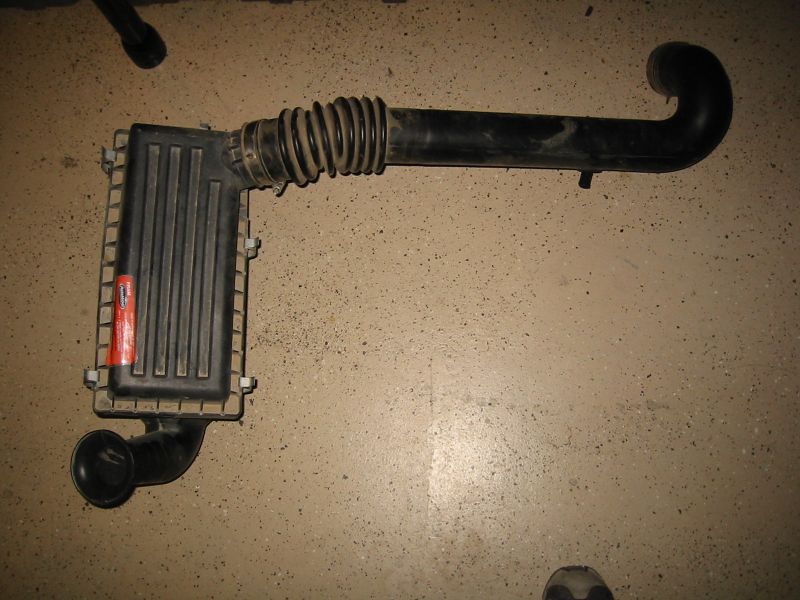
So here we are with the old intake pulled, after a couple of hose clamps were loosened and the intake housing was unbolted from the fender. That was the easy part!
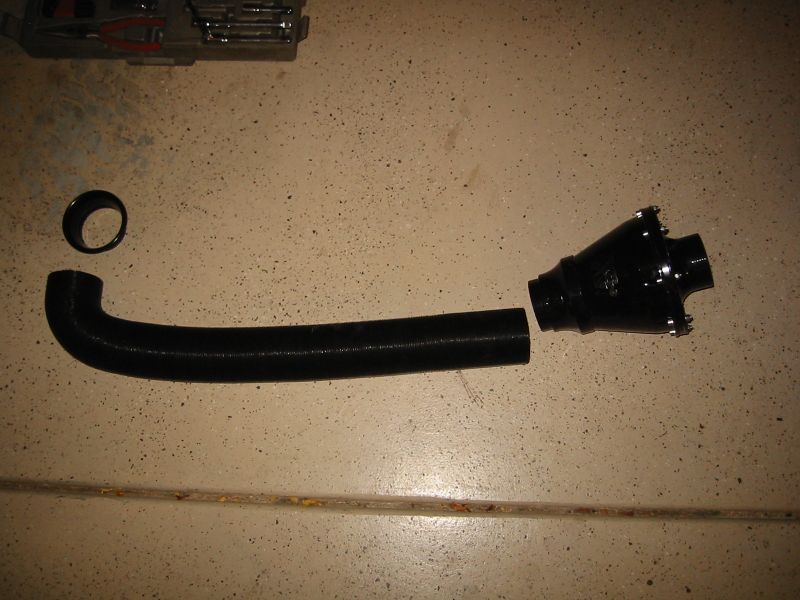
The new K&N pieces that will hopefully be an improved replacement to the factory filtration. Of course that is not all the intake will consist of, before we are done it will include a pair of silicone 90’s and tubing connecting them.
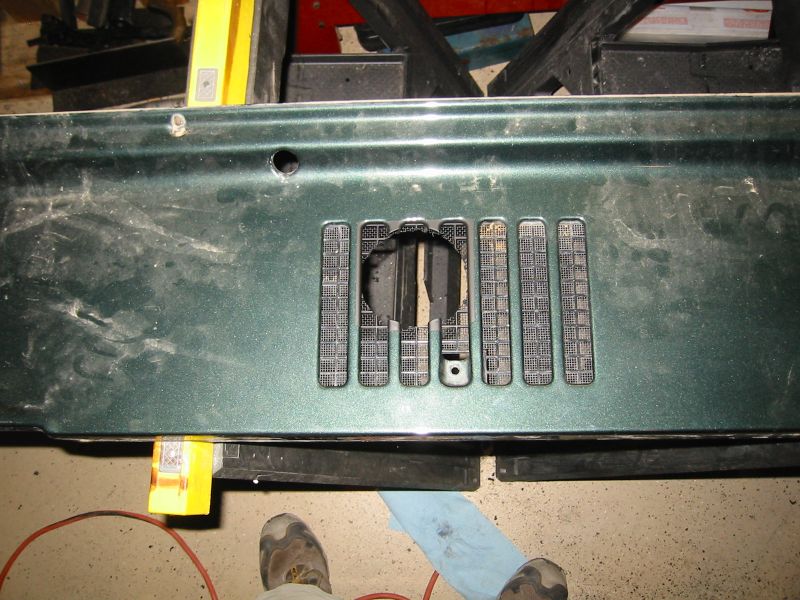
Next I used the metal horn that goes on the end of the flexible tubing to trace the hole onto the cowl vent. I cut enough so the horn sits above the vent about 1/2″. To keep the horn in place, I used some LocTite 5 minute Epoxy from Lowes. I am working on a fiberglass cowl scoop that will cover the entire cowl vent and keep water out of the intake. My theory is as long as the cowl is not submerged, the scoop with force most of the water to each side that may splash up the hood and away from the intake. With the horn sitting a 1/2″ above the cowl vent my other theory is any water that did make it under the scoop will drain down through the cowl.
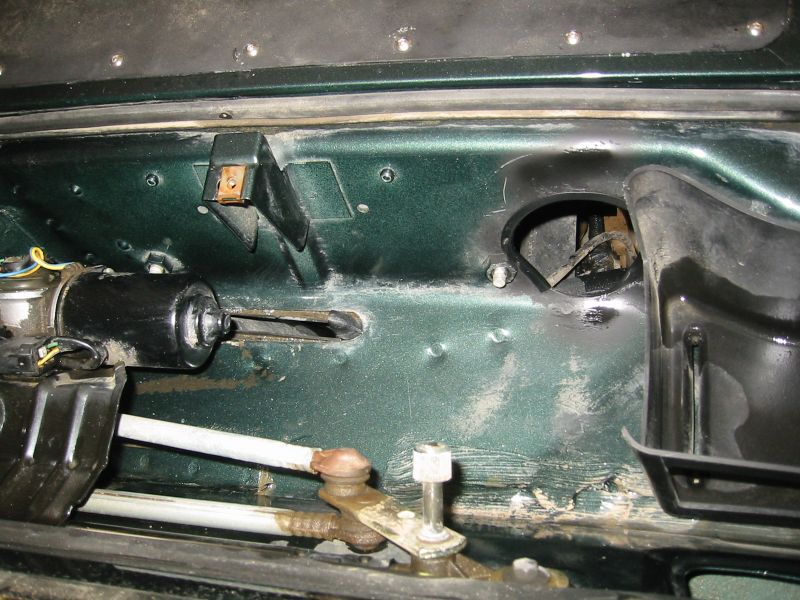
Next step was to cut a hole through the firewall to allow the flexible intake tube to pass from the engine bay to the cowl. I used a 3 1/4″ whole saw and an angle head drill. For my model year, the body ground bolt is in the same area I was cutting the new hole. I moved the hole toward the passenger side so I would not have to move the ground. DON’T FORGET TO TAKE CARE & NOT CUT YOUR WIRE HARNESS IF YOU DO YOUR OWN INTAKE!!! That is when I found I was cutting through a double panel for a small portion of the whole. Once the hole was cut, I filed the edge smooth, filled the double panel portion in with silicone, let it dry, and sprayed some paint on the bare metal. I used some plastic door trim, from Napa Auto, around the hole on the single panel. Over the double panel silicone portion I trimmed a piece of rubber padding with an adhesive backing that was laying around the garage. If memory serves me correctly, I purchased the stuff at Home Depot on the isle with the felt things for the feet of furniture.
Piecemeal Enclosed Cold Air Intake
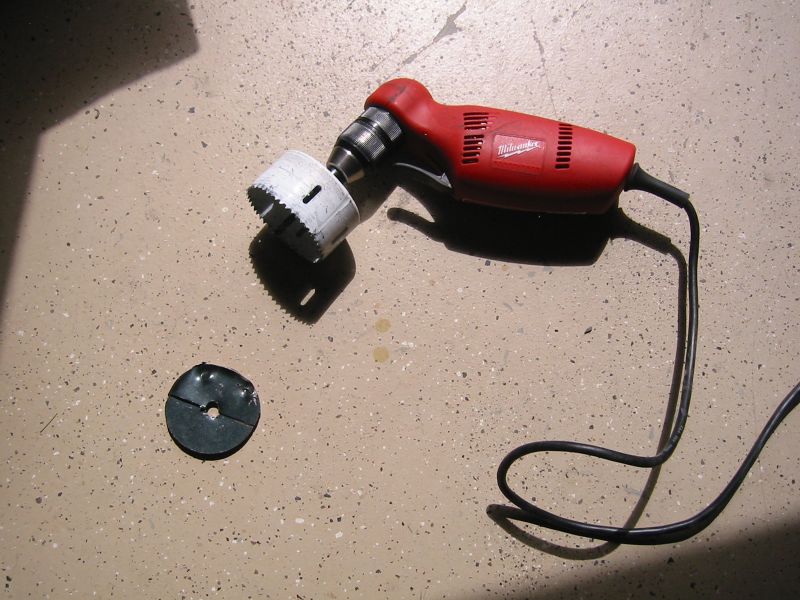
More evidence I am nothing more then a butcher to my poor Jeep. This was a bit of a challenge to saw out due to the angle, as well as constantly checking to ensure the wire harness was not getting cut.
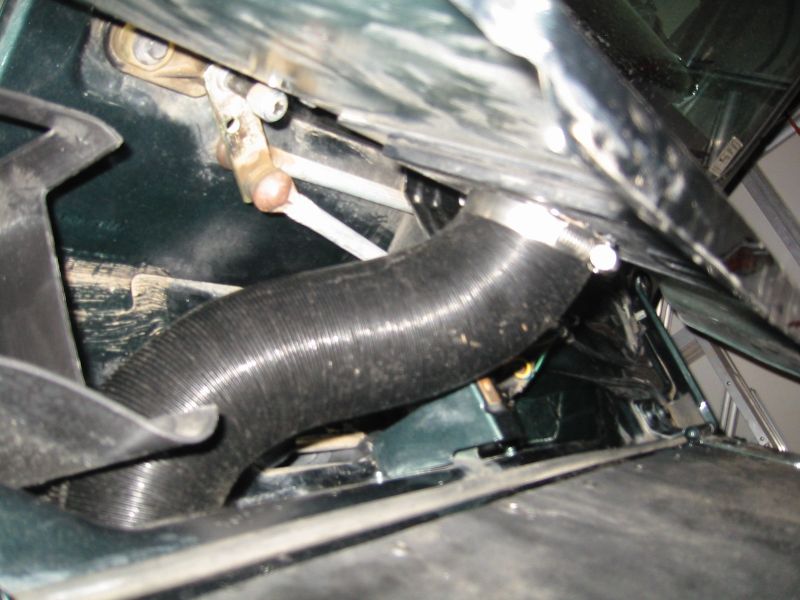
Here we have the flexible tubing connected to the intake horn through the cowl vent, while the other end is going through the firewall to be connected to the filter housing. I used a ton of house clamps through out for tying everything together.

Looking from the outside, you can see the intake horn sticking up through the cowl. As I mentioned earlier, I will be putting a scoop over it. Dont mind the mess, it’s a Jeep and it’s suppose to be dirty!
Piecemeal Enclosed Cold Air Intake
Here is what was done under the hood.
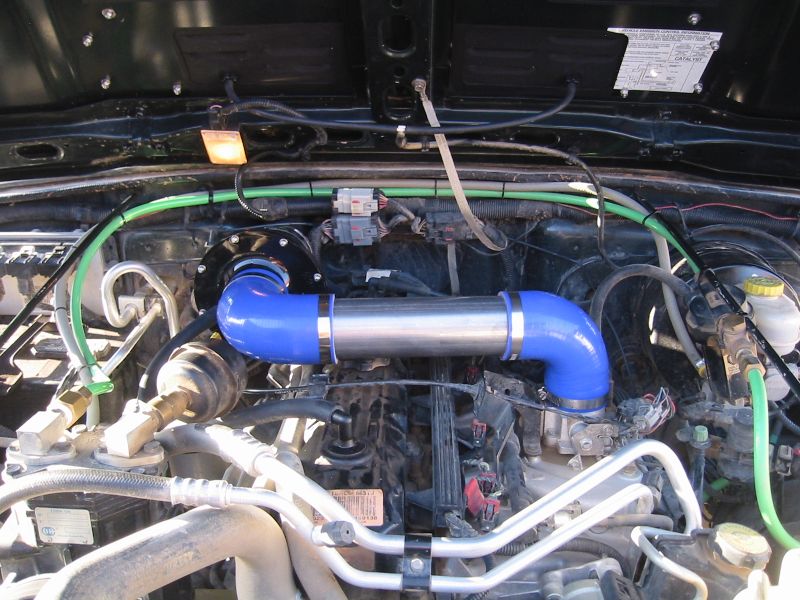
I used silicone 90’s from the tuner crowd and exhaust tubing to tie the filter and throttle body together. The filter required a 2 3/4″ fitting and the throttle body required around a 2 1/2″ fitting.

I went with a 2 3/4″ 90 off the filter connected to a piece of scrap 2 3/4″ Chevy exhaust pipe to a 2 3/4″ to 2 1/2″ 90 reducer to the throttle body.

K&N also sells accessories for this filter to include a bracket that I bolted at the spark plug rail. The kit also includes the bracket for bolting down (some where)…

This is the plug I am working on to make a mold, to make the actual fiberglass scoop that will cover the cowl vent and intake. The reason I am not just buying one off the shelf? What I see available sits up so high that one can not put the windshield down when its in place. I personally enjoy pulling the top, doors, and flipping the windshield down from time to time. In the above pic, it is a little hard to see, but the top portion is almost wedge shaped to help the water disperse to each side of the vent (if in fact it were to get that high).
This project took me a week of ordering, waiting for parts and for after work at night when it was cooler to work on. I have not done much driving in it except for a spin around the block and to the grocery store….about 40 minutes in the drivers seat total.
What I have noticed, seat of the pants….I can honestly say there is more there. As far as real numbers, I won’t even try to kid, I have no idea. But when I stomp on it the front of the Jeep really lifts and lurches to the passenger side. When driving like a civilized human being, I notice that I don’t have to mash the skinny peddle like I once did to get down the road. Cruising at 50 MPH, I was just barely touching the peddle. So power and economy, it seems if you put your foot in it, there is definitely more power. If you drive more relaxed, it would seem that there would be more economy due to little effort from the skinny peddle. I have a heavily armored Jeep on 6″ of lift running 35″ tires living at about the 3,000′ level. I’m still running factory 4.10 gears and a 5 spd, also running Trail Jammers 62mm throttle body/control module, Banks header & cat back exhaust. The Jeep goes in next week for 5.13’s, so I wont get any real testing of the intake to see what kind of difference it really made in a tank of gas.

